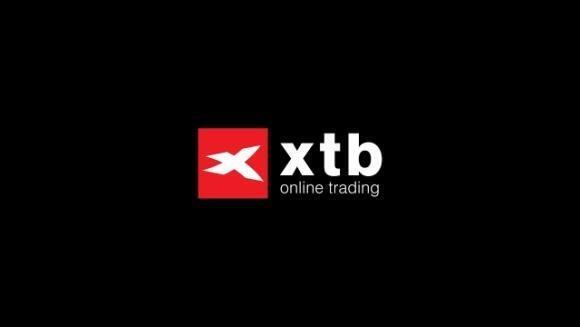Contents
We have no knowledge of the level of money you are trading with or the level of risk you are taking with each trade. The Doji candlestick doesn’t provide an accurate signal on the price direction. As for the limitations, the Doji candlestick reflects the uncertainty of traders and the signals. It’s not the best pattern to use for defining the price direction. Some traders struggle to tell the difference between the Doji candlestick and Spinning Top.
Like all facets of technical analysis, Dojis have a unique collection of pros and cons. As you can see, the trend is down, and the Gravestone has developed at the bottom of the trend. One of the best things about Dojis is that they are versatile. Two trading strategies where they excel are the reversal and breakout methodologies. The Doji candle can be a powerful tool in your trading arsenal if utilized within a comprehensive trading plan.

The wick can vary in length, as the top represents the highest price, and the bottom represents the low. The body represents the difference between the opening and closing price. If the closing price is right in the middle, it could be considered a trend continuation pattern. In this case, one can always refer to previous candles to predict future trends.
It forms when the traders are unsure about the foreseen market direction, and it looks like a plus sign. There’s a common notion that the Doji pattern predicts market reversals, showing the weakness of either buyers or sellers depending on the trend. The candlestick can exist even if bulls/bears continue the trend.
What Does a Doji Tell Investors?
The first appears when the market is in an overbought or oversold condition. And, the momentum indicator at the bottom of the chart confirms it. So, it does not tell a lot about a possible trend reversal. The only difference between a shooting star and a gravestone doji is that the first has a real body that can be seen. When a shooting start has a very small body we treat it as a gravestone doji.
- This Doji somehow suggests that bulls are probably stronger than bears.
- The Long-legged Doji is a potential price reversal signal in a defined up or downtrend.
- Classic Doji has short shadows in both directions and expresses indecision.
A three-day bullish reversal pattern that is very similar to the Morning Star. The next day opens lower with how to trade nfp a Doji that has a small trading range. The daily chart shows a dragonfly doji at the end of an uptrend.
Dragonfly Doji Candlestick Pattern
The candlestick can be found on any timeframe for any asset. Although the candlestick doesn’t provide accurate trend reversal or continuation signals, it may be an alarm when the market is ready to turn around. Between 74%-89% of retail investor accounts lose money when trading CFDs. Estimating the potential reward of a dragonfly trade can also be difficult since candlestick patterns don’t typically provide price targets.
It lets traders know that there was weakness early in the day, but by the end of the day, the price had recovered, indicating the strength of the bull market. A doji tells traders that buyers and sellers were balanced at the end of the day, but this may have big implications. If sellers have been dominating and pushing the price down, a doji suggests that the buyers held their ground. Dojis may indicate bullish and bearish reversals in an asset’s price. Alibaba Chart by TradingViewIn the above chart, the first dragonfly doji occurs at the top or in an overbought situation. The momentum indicator at the bottom confirms the overbought situation.
Therefore, if you are unsure about what will happen, the doji can act as a good guide to you. Steve Nison, is one of the best-known writers on candlestick patterns. This book will help you get to know more about candlesticks.
The dragonfly doji pattern doesn’t occur frequently, but when it does it is a warning sign that the trend may change direction. Following a price advance, the dragonfly’s long lower shadow shows that sellers were able to take control for at least part of the period. best brokerage accounts 2021 While the price ended up closing unchanged, the increase in selling pressure during the period is a warning sign. Estimating the potential reward of a doji-informed trade also can be difficult because candlestick patterns don’t typically provide price targets.
CFDs are complex instruments and come with a high risk of losing money rapidly due to leverage. 75% of retail investor accounts lose money when trading CFDs with this provider. You should consider whether you understand how CFDs work and whether you can afford to take the high risk of losing your money. CFD and Forex Trading are leveraged products and your capital is at risk.
What happens after a doji candle?
Trading any type of doji candlestick pattern requires patience and the ability to wait for confirmation. The appearance of one of these doji candles alerts traders of a possible price reversal, but until that occurs, most traders leave the pattern alone. Most traders allow for slight discrepancies between the prices.
Please ensure you fully understand the risks involved by reading our full risk warning. Doji might be simple candlestick patterns, but they can unlock some powerful strategies. In this case, the dragonfly doji occurs after a small pullback in an overall uptrend. As the price is starting to move back up, the dragonfly doji on top of recent candles shows that the sellers are decreasing and the bulls are taking over again. The price that is moving higher after the dragonfly doji is called a confirmation, which helps to confirm this interpretation of the price action.

After a strong advance, this type of indecision could mean that the bulls are losing control, from a bearish long-legged doji. A price move lower following the pattern could induce traders to enter short Macd And Stochastic positions. After a strong decline, a long-legged doji candlestick could indicate that the bears have lost momentum. A move higher following this pattern could induce traders to take long trades.
A gravestone doji on a downtrend can be a reversal signal, whereas it might point to a continuation of bullish price action. For example, if you think that a common doji at the bottom of a downtrend means possible reversal, you can test the bullish bias using the stochastic oscillator. This indicator follows the speed and momentum of the market over a specific timeframe, predicting price movements. Doji candles can be spotted in most financial markets, especially those that are more volatile, such as forex and stocks. Read our article on the top forex candlestick patterns to look out for. Finally, the fourth and fifth dragonfly doji appeared during a trendless time when neither bulls nor bears were not powerful enough to move the market in their direction.
Short Line vs. Common Doji
Doji tend to look like a cross or plus sign and have small or nonexistent bodies. From an auction theory perspective, doji represent indecision on the side of both buyers and sellers. Everyone is equally matched, so the price goes nowhere; buyers and sellers are in a standoff. A bullish reversal pattern consisting of three consecutive long white bodies. Each should open within the previous body and the close should be near the high of the day.
The Dragonfly Doji sets up when the candle’s open, close, and high is approximately the same. Visually, the Dragonfly looks like a “T,” as depicted in the image below. This formation suggests that heavy selling was present, but the market has rebounded.
Bulkowski on the Dragonfly Doji Candle Pattern
Similar to the common type, this candlestick has longer shadows, and the body is still small as the price opened and closed at almost the same level. This candlestick can hardly be used as a signal of the future market direction. Every trader should be equipped with a wide range of technical tools to define the market direction. These also include candlestick patterns, though not all of them can show the exact market movement. A Doji pattern shows market uncertainties, not price direction.
Dragonfly Doji: Three Trading Tidbits
They are rare, so they are not reliable for spotting things like price reversals. A doji (dо̄ji) is a name for a trading session in which a security has open and close levels that are virtually equal, as forex broker with low minimum deposit represented by a candle shape on a chart. Based on this shape, technical analysts attempt to make assumptions about price behavior. Doji candlesticks can look like a cross, inverted cross, or plus sign.
However, a doji on its own isn’t necessarily a strong signal, so you’ll want to make sure that you have a stop loss in place – and that you’ve confirmed any likely move. Long-legged doji have a long wick on both sides, indicating a lot of volatility within the session. Bulls sent the market up, bears sent it down – but by the end neither had the upper hand.
Related posts
CFA vs CPA: Which Qualification is Better for You?
Forex Trading : 11.01.2023 : 0 ComentariiContent CPA Exam Education Requirements What Is a CPA? Difference Between CPA and CFA Is CFA harder than CPA? Or […]
Vantage FX Review 2023 Bonus, Demo & App Ratings
Forex Trading : 09.12.2022 : 0 ComentariiFurthermore, the company has provided a comparison between MT4 and MT5 platforms that might help traders have a broader view. […]
Kurs Bitcoin 75029 BTC PLN Notowania, najwyższa cena, wykresy, historia
Forex Trading : 29.08.2022 : 0 ComentariiContents 09-26 09:59 | Dział Analiz Makroekonomicznych Alior Bank S.A. Kurs dolara (USD) i ceny gazu zaskoczyły: ogromne wzrosty. Nowe […]
Bid and Ask Price Explained Heres What You Need To Know
Forex Trading : 22.07.2022 : 0 ComentariiAccess to Electronic Services may be limited or unavailable during periods of peak demand, market volatility, systems upgrade, maintenance, or […]